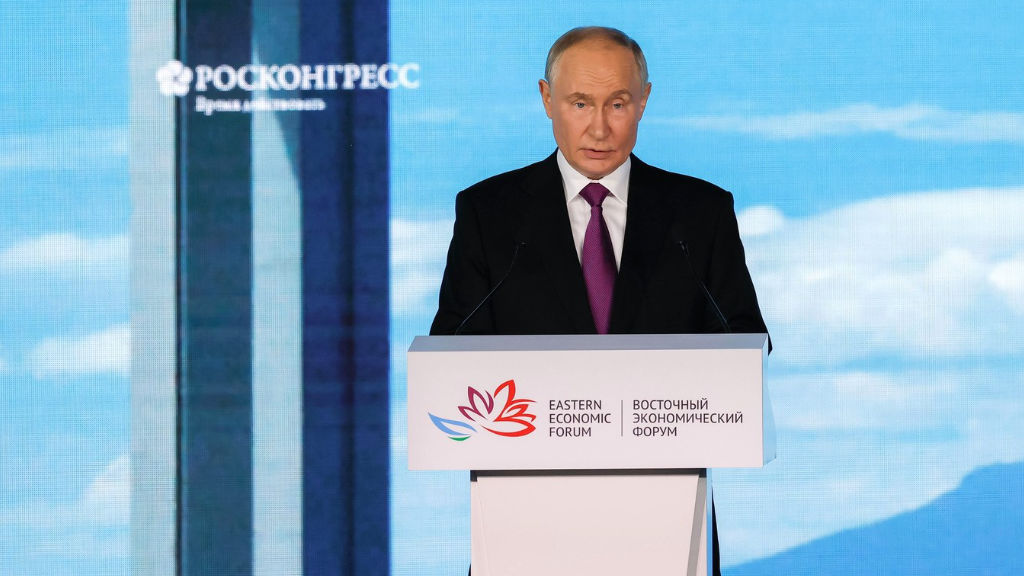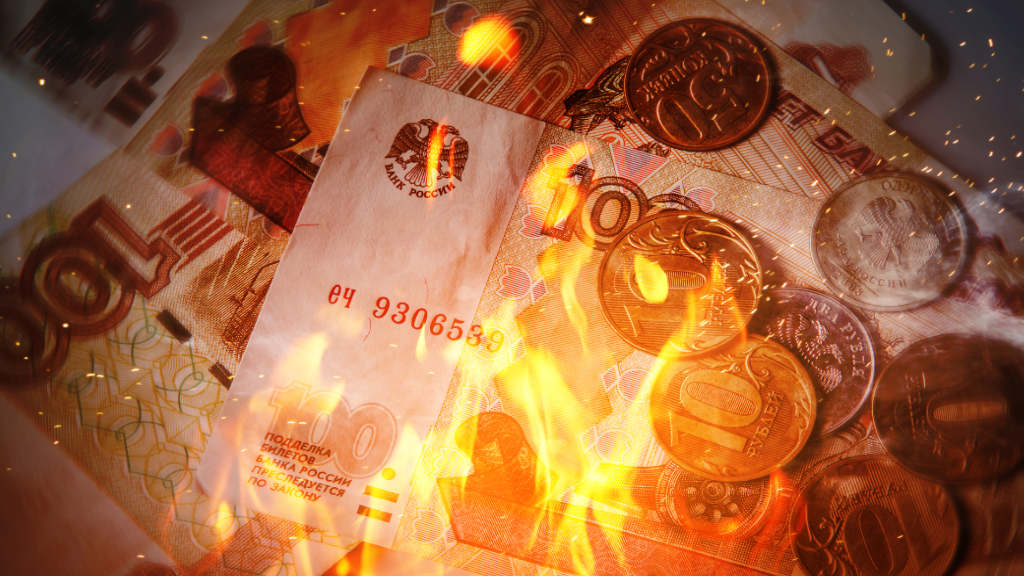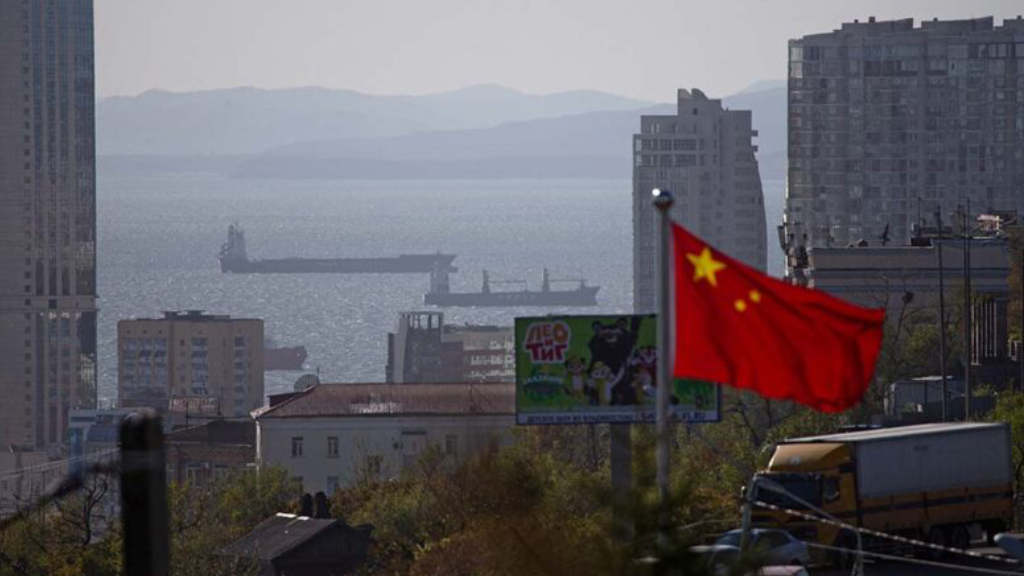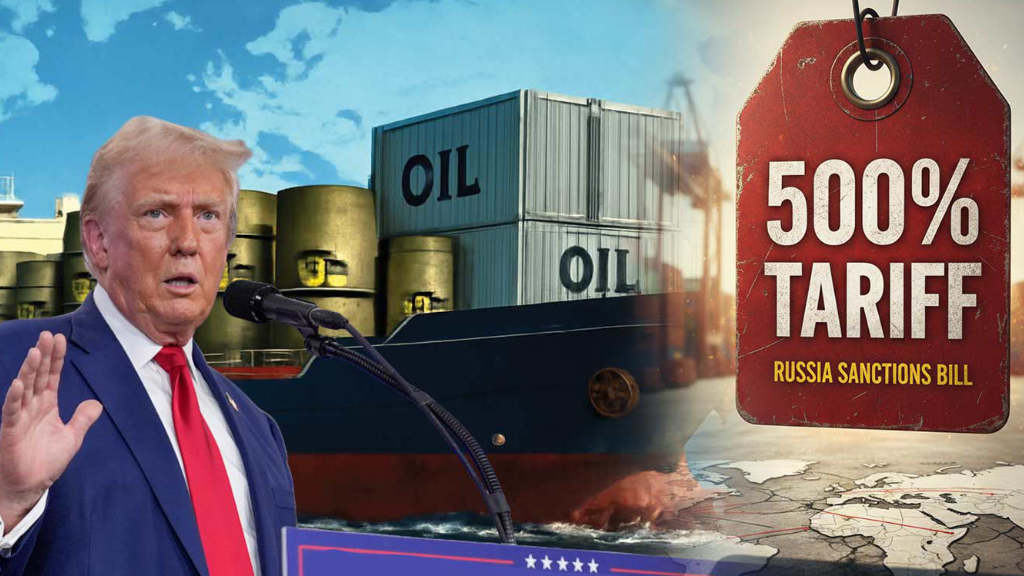The Russian President, Vladimir Putin, gave a plenary speech at the Eastern Economic Forum (EEF) on Thursday (September 5) in which he outlined Russia’s plans for regional Asian development and other issues related to security, trade and investment. The speech was one of Putin’s longer talks, lasting close to 45 minutes. Attendees included the Malaysian Prime Minister Anwar Ibrahim, as well as Han Zheng, the Chinese Vice-President, in addition to several hundred other officials and representatives from 76 countries. We have broken Putin’s speech down into several topics, as he made them, including an Introduction, Fiscal Incentives, Special Economic Regions, Foreign Standards Approval, Regional Energy, Transport & Logistics, Cross-Border Digitisation, the Northern Sea Route, Mineral Resources, Education, Social Development, Private-Public Investment, Urban Planning, and a Summary. Our analysis as RPA is underneath each item.
Introduction
Putin
“Ladies and gentlemen, friends. I am delighted to offer warm greetings to all the participants and guests of the 9th Eastern Economic Forum. It has become a tradition for Russia and the city of Vladivostok to host this event in early September, bringing together businesses, technology providers, research teams, senior executives from major corporations, government officials, specialists, experts and entrepreneurs who are interested in Russia’s Far East and recognise the immense opportunities this unique Russian region offers for launching creative undertakings and engaging in mutually beneficial partnerships.
As you know, we have designated the development of the Russian Far East as a national priority for the 21st century. The significance and correctness of that decision have been confirmed by life itself, the challenges we have recently encountered and, most importantly, the objective trends that are gaining momentum in the global economy, when the main business ties, trade routes and the overall development are increasingly shifting towards the East and the Global South.
Our Far Eastern regions offer direct access to these growing emerging markets, helping us overcome the barriers which some Western countries are trying to create worldwide. The most important thing, as I have already mentioned, is that the Far East is a huge area for implementing business initiatives, launching complex projects and creating whole new industries.
In fact, the Far East has become a crucial factor for strengthening Russia’s standing in the world and our flagship in the new global economic reality. The further development of the Far East will largely determine the future of our country as a whole.
This subject – the image of our future – is the key focus of nearly 100 events, panel sessions and roundtable discussions at the Eastern Economic Forum. Overall, representatives of more than 75 countries and territories are taking part in the forum’s events.
It is extremely important that such discussions are complemented with substantive business dialogues and result in the adoption of investment decisions and trade agreements. I would like to say that over a thousand agreements worth in total more than ₽10.5 trillion (US$117.3 billion) were signed during the previous three forums.
In short, the Eastern Economic Forum has rightfully become a respected venue for establishing reliable business contacts and discussing the strategic development of the Russian Far East and the Asia-Pacific region as a whole.
In my address I will tell you about some of our planned actions in this sphere, our proposals for our foreign partners on strengthening investment, trade, industrial and technological cooperation in the Asia-Pacific region, as well as about our achievements and plans in the economy, infrastructure and social sphere of the Far East, including for improving the quality of life for our citizens in this region.”
RPA
A general introduction, with the figure of US$117.3 billion of foreign investment over the past three years into the Russian Far East being a notable number.
Fiscal Investment Incentives & Special Economic Regions
Putin
“Let me remind you that back in 2013 we launched a new strategic programme and a governance framework for promoting comprehensive development in Russia’s Far East. And this approach has proven its worth. Over the past ten years, over 3,500 manufacturing, infrastructure, technology and educational projects have been established in the region. Over the same period, fixed capital investment has been gathering momentum in Russia’s Far East, with the growth rate exceeding the national average by a factor of three times.
This investment brought about tangible results. There are about 1,000 new enterprises in Vladivostok, and these efforts have helped create over 140,000 new jobs. In terms of industrial output growth, the Far East region has been above the national average by 25% since 2013.
Let me also remind you that there are currently 16 priority development territories in Russia’s Far East. There is the Vladivostok Free Port. We introduced a preferential regime for the Kurils, and established a special administrative district on Russky Island (part of Vladivostok). This district has offered a pathway for re-shoring assets worth over ₽5.5 trillion (US$61.5 billion) back to Russia from offshore and foreign jurisdictions. More than 100 companies are currently registered in Russky Island.”
RPA
Russky Island has been designated as a Special Economic Region (SAR) in Russia and offers reduced tax rates and other investment incentives. This has proven a success for Russian-owned companies facing pressure in their overseas operations, with many relocating back to Russky Island to take advantage of these lower operating costs and higher profitability. They have been bringing not just their previously foreign based capital with them but also their administrative and financial operations. While the West has focused on Russian nationals moving out of Russia, the other side of the coin is that given Western attitudes towards Russian-owned corporations, many have been relocating back, including from European jurisdictions such as Cyprus, Jersey (UK), Malta and Lichenstein. We provided an overview of Russia’s two SAR’s here.
Putin
“We will make sure to continue this advancement and will work tirelessly to improve the business environment in Russia in general, as well as in its Far East, including by relying on innovative and effective practices when working with foreign investors.
For example, we announced the initiative to establish international priority development territories in the Far East at the 2023 Eastern Economic Forum. Foreign investors, primarily from the friendly countries, of course, must benefit from a globally competitive environment.
We have plans to establish our first International Priority Development Area (IPDA) here in Primorye Kraai. Our Chinese and Belarus partners have shown great interest in this undertaking. Belarus is contributing to building a new deep-water port here. I would like to ask the State Duma and the Government to step up their efforts to draft a law for launching these international priority development territories.”
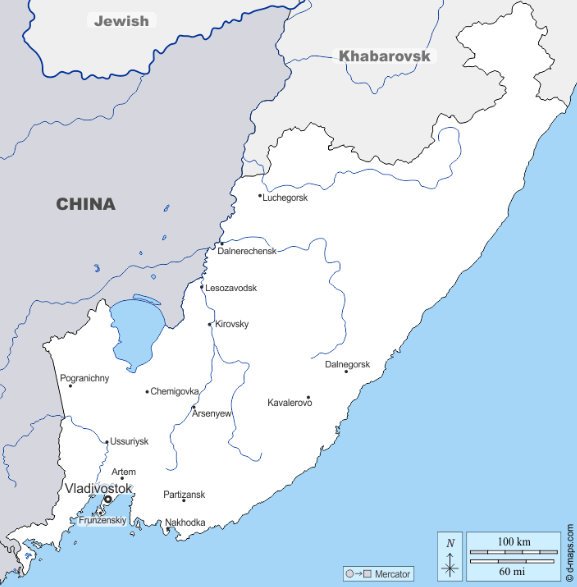
RPA
The International Priority Development Area (IPDA) is a type of Free Trade zone that offers incentives to foreign investors. This is essentially a Russian variant of the successful Chinese model introduced during the late 1990’s. Alexei Chekunkov, Russia’s Far East and Arctic Development Minister has stated that the law on the creation of IPDAs will be passed by the State Duma in the Autumn session of this year and will go into effect at the beginning of 2025. The proposals state that resident companies of IPDAs will receive preferences and tax breaks, including a simplified procedure for provision of land parcels and the necessary infrastructure. The Far East Development Ministry has also proposed to extend the duration of tax breaks for IPDA residents to 15 years from 10 years. Typical corporate income tax (CIT) breaks include 3 years at zero per cent, rising to a maximum of 10%. Russia’s standard CIT rate is 20%. Other incentives include discounts on land acquisition, utility expenses, and mandatory welfare contributions to employees.
Belarus is planning to use a specific IPDA exclusive to its own use and is developing a deep water port at a still to be determined location on Russia’s Pacific coast. That will allow Belarus exporters improved access to the Chinese market as well as to other Asian and Asia-Pacific nations.
Foreign Standards Approval
Putin
“There is another regulatory solution designed to facilitate and expand our ties with our foreign partners. Starting on September 1, 2024, Russian law allows for the use of foreign standards in construction and design. Of course, this applies to countries where quality and safety requirements for permanent structures are just as high as here in Russia. I hope that this approach serves its purpose, including within the Far East’s international priority development territories. Developing Bolshoi Ussuriysky Island in the Khabarovsk Territory should serve as a model for working with our foreign partners, attracting investment in construction projects and creating jobs. This project provides for creating major logistics centres and border checkpoints, as well as expanding its road network.
Last May, during the state visit to the People’s Republic of China, we agreed to collaborate with our Chinese colleagues on this project. I am certain that it will provide a good powerful impetus to the development of Khabarovsk and the entire region. I am asking the Government to finalise all the organisational and financial issues in order to begin fulfilling this plan as soon as 2025.”
RPA
Russian officials have been very busy paying attention to foreign investment trends and listening and learning from China’ experience. Although global foreign investment outflows have been declining the past two years, China has long been a primary foreign investment destination and is still the world’s second largest recipient after the United States. Russia, historically, has lagged well behind. This is now changing. In addition to the tax incentives described earlier, Moscow has made a smart move in accepting foreign standards in construction and design. That is primarily aimed at Chinese manufacturers, and it can be expected that Chinese capital investment will increase into the Far East region – which requires significant infrastructure development – as a result.
Putin made a reference to logistics centres in Khabarovsk, being a nod to the development of the Northern Sea Route (NSR). That has short term implications for Chinese shipping to Russia, and longer-term, post-Ukraine conflict implications for Chinese shipping via the NSR to markets in Northern Europe.
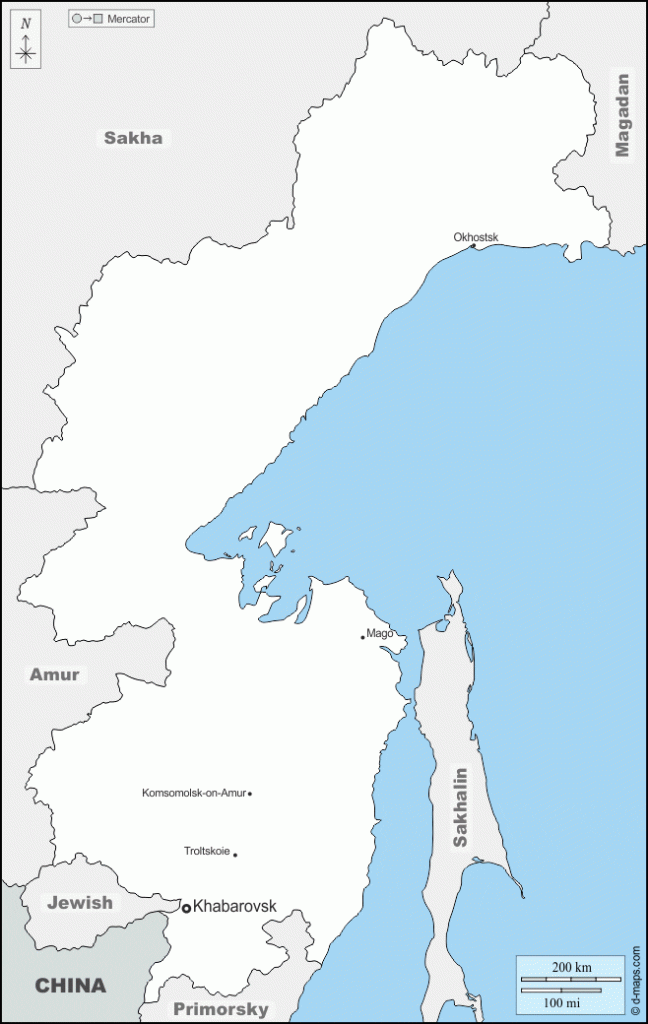
Regional Energy Supply
Putin
“Electricity supply is one of the key issues when it comes to launching business initiatives in the processing industry, in housing construction and in transport network upgrade, across all areas. The Russian Far East is experiencing an increase in energy consumption. The current rate is 69 billion kilowatt per hour annually, and by the end of the decade, we expect it to be around 96 billion. Even today, there are areas, residential areas and major Far Eastern investors who face a shortage of power and have to wait for the launch of new stations. This delays construction, the operation of industrial facilities and infrastructure.
I have already instructed the Government, our major energy companies and business circles to develop a long-term development programme for energy capacity in the Far East, and work on respective project financing mechanisms. This programme aims to eliminate the expected deficit of electric energy in the Far East, primarily by launching new generation facilities like, for example, the Nizhne-Zeiskaya hydro power plant (HPP) in the Amur Region, which will not only provide electricity to the area and the Eastern Operating Domain but also help protect territories and residential areas from flooding. I am also asking to consider building nuclear power plants in the Far East.
I want to emphasise that the power development plan must consider both current and future needs of businesses and the public, as well as the long-term objectives of the constituent entities, cities and smaller residential areas.”
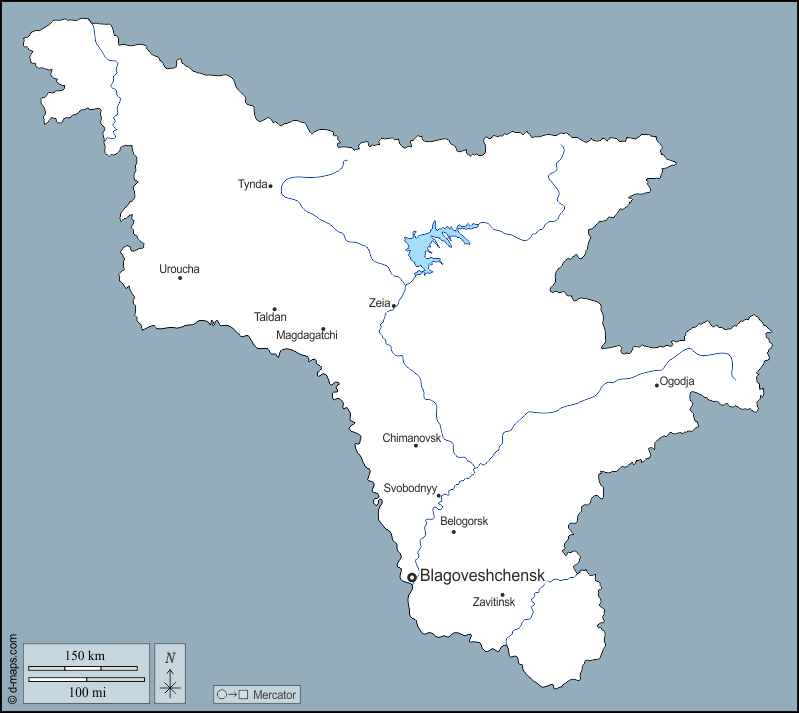
RPA
Russia is often mislabelled as purely an oil and gas play; however, it is also one of the world’s leading nuclear, hydro, solar and wind energy power exporters and has a long history of building nuclear power plants (NPP) and other energy producing facilities. Putin’s statement as regards energizing the Russian Far East illustrates a multi-modal, long-term approach to providing energy generating solutions.
Transport & Logistics
Putin
“This also applies to strengthening transport and logistics capabilities of the Far East and the entire country. The largest and most significant project here is, of course, the expansion of the Eastern Operating Domain.
Over the past ten years, more than 2,000 km of railway tracks have been built and more than 5,000 km have been renovated on the Trans-Siberian Railway and the Baikal-Amur Mainline. We have built and renovated more than 100 bridges and tunnels, including those across the Lena, Bureya and Selenga rivers. By the end of this year, the carrying capacity of the Eastern Operating Domain railway network is expected to reach 180 million tonnes.
This year, we launched the third stage of this highly important transport artery, and the works are currently underway. I want to emphasise that our objective is to eliminate railway bottlenecks and build over 300 facilities, including routes supplementing the Severomuisky, Kuznetsovsky and Kodarsky tunnels, as well as a bridge across the Amur River. This is a much more ambitious goal. It is crucial to start planning for the future today. For example, we will need to lay a second set of tracks along the entire Baikal-Amur Mainline and electrify this railway.
Over the next eight years, we will lay 3,100 kilometres of tracks along the Eastern Operating Domain. To put this into perspective, this is the same volume of tracks that were laid during the first and second stages of expanding BAM and the Trans-Siberian Mainline combined. This is also comparable to the construction of BAM in 1974−1984.
Today, we are implementing a project whose scale exceeds the largest Soviet-era infrastructure investment project completed by all Soviet republics pooling all their resources.
Just like the Trans-Siberian Mainline, the new transport corridor between St Petersburg and Vladivostok will serve as a vital continental artery.
Expanding freight traffic volumes and improving the quality of vehicle traffic are not the only goals. When completed, the new corridor will also promote inbound tourism: the entire route passes through numerous Russian regions.
The corridor is being developed in stages. In December 2023, we opened a modern motorway between Moscow and Kazan. By late 2024, this route will reach Yekaterinburg and later Tyumen. We will also build bypass roads in Omsk, Novosibirsk, Kemerovo and Kansk.
In the future, when the modern road reaches Vladivostok, the auto transport corridor will be over 10,000 kilometres long, including routes for accessing checkpoints on the Russian state border.”
RPA
Russia is embarking on a massive infrastructure development build that dwarfs any comparable projects worldwide. The Eastern Operating Domain is essentially the upgrading and capacity development of the two main West-East railway lines, being the Trans-Siberian Railway and the Baikal-Amur Mainline (BAM) which is similar but runs further north.
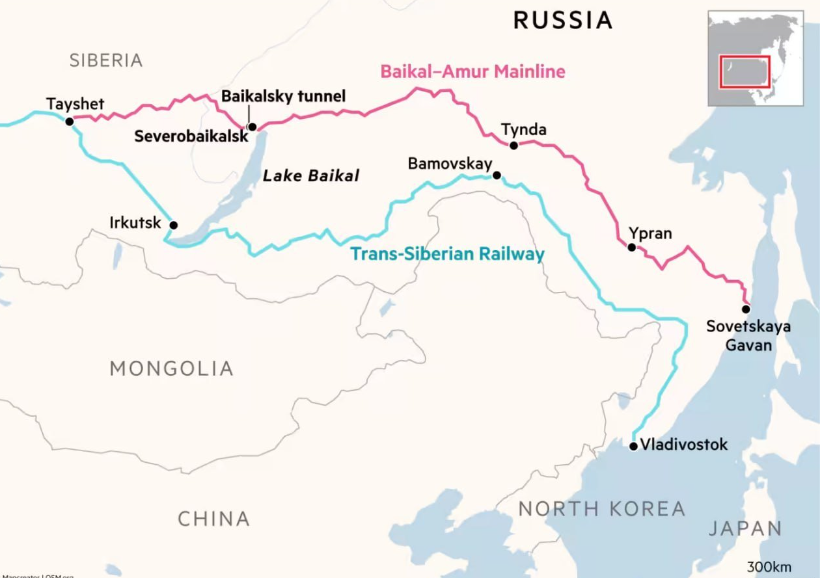
These railways, as Putin referred too, also intersect with the rail networks of all other post-Soviet countries, many of whom are also redeveloping, expanding and electrifying their own networks, as is China and much of the Asian region. While the Eastern Operating Domain development is significant in its own right, it is the additional Eurasian regional connectivity and other development projects that intersect with it that brings home the complete picture of the total regeneration and connectivity of the Eurasian landmass.
Cross-Border Digitisation
Putin
“In this connection, I would like to remind you of the objective set out in the Address to the Federal Assembly, specifically, the reduction of queues at the border and reducing the time in which lorries undergo checks, which should not exceed ten minutes.
We aim to achieve this result at the first five Far Eastern border checkpoints by 2026. It is worth noting that railway checkpoints are already processing freight at the border promptly.
Let me stress this: a truly large-scale effort has been launched at both the Eastern Operating Domain’s railway network and at all of Russia’s major road infrastructure facilities. This effort involves specialists, engineers, and designers from many regions of our country. They are proving through their hard work and responsible approach to business that Russia is ready and able to handle large-scale construction projects, and do it quickly and with high quality, and to implement infrastructure and transport projects on a national and global scale. These projects include the development of the Northern Sea Route as an international logistical route. Over the past decade, the freight traffic flow on this route has increased by an order of magnitude, from just four million tonnes in 2014 to over 36 million tonnes last year. This is 400% more than the Soviet-time record.”
RPA
Additional comment on infrastructure development, showcasing that Russia is also concentrating on the parallel development – including the implementation of a mass digitisation programme – to smooth inter-continental transit throughout the Eurasian region. Nothing is being left to chance.
Northern Sea Route
Putin
“We will continue to boost the freight traffic, including by developing actively Arctic deposits, rerouting cargo flows from west to east, and expanding the transit.
The large-scale plan for the development of the Northern Sea Route is currently being implemented. We are building icebreakers, expanding our satellite cluster in orbit, strengthening the coastal infrastructure, and upgrading the network of emergency and rescue centres. Coastal cruises were launched on the Northern Sea Route two years ago to familiarise ourselves with new logistical routes. Today, this arrangement includes 14 ports in the Northwest, the Arctic, and the Russian Far East.
It is worth noting that the capacity of Russian ports within the limits of the Northern Sea Route exceeded 40 million tonnes at the end of last year. However, we believe that this is just the beginning. We will continue to increase their capacities, upgrade the cargo transshipment mechanism, and expand the nearby and far-off rail approaches to these ports. One of our goals is to increase the capacity of the Murmansk Transport Hub to 100 million tonnes and potentially even higher.
Our Eurasian integration partners are also interested in developing the Murmansk Transport Hub. For example, our colleagues from Belarus are giving careful consideration to the prospects for expanding the port infrastructure and their terminals on the Kola Peninsula. Of course, we also invite other countries to take part in this project. I know that there is an interest in this work.
Let me add that Russia implements all its transport and logistical initiatives using advanced engineering, digital and environmental solutions. This creates additional demand for the output of Russian machine-building and iron-and-steel plants, and for services of the construction and other industries, research institutions, and hi-tech businesses.”
RPA
Further references to not just the extent of Russia’s development of its infrastructure, but also the commitment to use the latest technologies in doing so.
Mineral Resources
Putin
“It is with this approach based on the latest solutions and the greatly improved technological, economic and educational capability of the country as a whole, that we must address the tasks of strategic development of the Far East, including the further strengthening of the region’s basic mineral resources sector.
Today, the Far East accounts for 100% of Russia’s tungsten, tin, fluor spar and tincal production, 80% of our diamonds and uranium, over 70% of silver, and 60% of gold. However, mining in the main production areas, including Yakutia and Chukotka, began long ago and their resources are objectively limited, while the demand for them is growing, both for export and on the domestic market.
We must ensure the resource sovereignty of our country and provide a reliable basis for the sustainable supply of affordable raw materials and fuel to the national economy, to our regions, cities and towns, as well as create a foundation for the production of new materials and energy sources. As I mentioned earlier, we must accomplish this by utilising more effective domestic technologies and scientific solutions in the fields of ecology and mineral resources management.”
RPA
A significant phrase here is ‘resource sovereignty’, meaning that Moscow will be paying close attention to foreign investor participation in any of its strategic reserves. Given the West’s and especially Europe’s attitude towards using any of Russia’s mineral wealth, it is hard to see where any involvement from Europe (and to some extent, the United States) may come from. Given that much of Russia’s mineral wealth includes critical components for contemporary and future technologies, this may well over time create significant problems in the West’s capabilities to source these items.
Putin
“During our forum last year, we instructed the Government to prepare separate programmes for exploring the resources of the Far East and Siberia and to incorporate them into the “Geology, Revival of a Legend” federal project.
These programmes have been prepared. According to our estimates, for every 1 ruble of federal funds invested in exploration, we will attract at least 10 rubles in private investment. But the main thing is that these investments will pay back and produce a huge profit, as well as have a comprehensive effect throughout the production chain. However, this job must be completed within the given timeframe and with due regard for the investment planning horizon.
I have asked the Government to include the funding of these programmes in the draft three-year federal budget in the amounts necessary for achieving our goals.
As I said, the Far East has the potential to increase the state of geological exploration severalfold, including when it comes to the exploration for and production of high-tech raw materials such as titanium, lithium, niobium and rare earth metals, which we will need for the economy of the future. Most importantly, we have all these elements.”
RPA
The ‘Geology, Revival of a Legend’ project is designed to provide geological exploration and the discovery of new mineral deposits in Russia, and as a result, for Russia will retain its leading global position in gas and gold reserves. Alexander Kozlov, Russia’s Natural Resource Minister, has said that for scarce mineral types such as tungsten, lithium, uranium and rare earth metals, the programme will elevate Russia to become one of the world’s top four producers of these commodities.
Kozlov said that work is currently underway at 23 sites under the scheme. Eight are involved in exploration for hydrocarbons (five in Yakutia, the others in Tomsk, Tyumen, and Khanty-Mansiysk). Another 15 sites are dedicated to the search for solid minerals, such as gold, copper, lead, zinc, iron ore, and bentonite clay.
The Ministry has also developed programs for 11 Far Eastern regions and 10 in Siberia, with Kozlov saying that there are another 341 promising areas ready for additional geological exploration (256 in the Far East and 85 in Siberia).
Commenting on exploration plans in the Far East, Kozlov has said that “Additional geological exploration will make it possible to discover nearly 1,000 new fields with a good level of reserves. As a result, we will maintain, and in some cases strengthen, our global leadership. In natural gas – first place in the world. In gold – first, in copper – fifth. In addition, for scarce mineral types like tungsten, lithium, uranium and rare earth metals, we will join the world’s top four. In this regard, the low level of knowledge we have of the Far East is to our advantage. We have a fund of little-studied territories in which major discoveries will be made. We are also looking for underground water beneath the territories of the federal project. Drilling and testing of 14 wells is currently underway, and we expect that the increase in reserves will be over 51,000 cubic meters of water per day instead of the planned 10,000.”
Education
Putin
“These industries have a huge potential for the growth of our Far Eastern regions, for creating jobs, enhancing the availability of various services, strengthening ties and improving logistics efficiency.
We will support the development of innovative and creative industries, and the infrastructure for the big data and AI economy in the Far East. In particular, we will establish a zone here where civilian purpose drones will be created. We will continue to build up the scientific and educational potential of the Far East so as to use the advantages of technological progress to full capacity. New projects to build university campuses in Yuzhno-Sakhalinsk and Khabarovsk have been launched in the region, but this is clearly not enough for the Far East.
I propose launching several more projects, namely, to build new campuses in Ulan-Ude, Petropavlovsk-Kamchatsky and Chita. We will also complete the second phase of the campus at the Far Eastern Federal University in Vladivostok. These campuses will have all the necessary conditions for study, work and accommodation of the students, as well as youth entrepreneurship platforms and business clubs.
We will also upgrade our Arctic universities. The project to build a campus in Arkhangelsk will be followed by a similar project in Murmansk.
Innovative engineering schools will be created at university campuses. Two such schools have already opened in Sakhalin and Vladivostok. Their task is not only to train professionals for our industries, agriculture, transport, the services sector and AI spheres, but also to propose unique solutions for broad implementation in management, the social sphere and economic sectors.
A RusHydro science and technology centre has been functioning efficiently on Russky Island for two years. It is focused on innovative global energy research, and its solutions are being actively used in the retooling and modernisation programme of the energy sector in the Far East.
Our leading companies will contribute to the establishment of another major innovative science and technology centre at the Far Eastern Federal University on Russky Island. It will specialise in research and practical solutions in the fields of marine engineering, biotechnology, biomedicine and other promising spheres.
I urge our colleagues in the Government and in the Primorye Territory to use the Far Eastern concession mechanism for the implementation of that project, as well as to explore ways to attract scientists from other research centres in Russia and other countries to that centre. What I have in mind are competitive incentive programmes and benefits packages for professionals and their families.”
RPA
Putin focussing on the human resource and educational infrastructure required to support Russia’s development plans.
Social Development
Putin
“We realise that the successful implementation of our plans in the Far East and nationwide depends primarily on the people and Russian families.
I have already noted that we cannot rely on outdated logic, where new plants and factories were built first and then the authorities started thinking about their employees. This unfair logic simply does not work in a modern economy, an economy of the future that revolves around people.
This is why we have launched major social initiatives together with new economic plans in the Far East. We have also activated the unified subsidy mechanism, which helps fund the construction of schools and kindergartens, outpatient clinics and hospitals and sports centres, improve the urban environment and implement infrastructure modernisation projects. Almost 2,000 social and infrastructure facilities have been built to date.
The unified subsidy has become a powerful financial lever for the Far Eastern concession mechanism. It aims to attract private investment in social projects. Businesses are already planning to invest over ₽120 billion (US$1.4 billion) for this purpose. We are currently implementing 36 of these initiatives, with work already underway.
For example, we are building a year-round alpine skiing resort here in Primorye, as well as a national museum and theatre in Ulan-Ude. Petropavlovsk-Kamchatsky will receive a new community centre, and an art museum will be completed in Khabarovsk. We are building new sports facilities in Magadan and Chita. We are completely modernising municipal lighting systems in Chita and Birobidzhan. Of course, we will continue to support the Far Eastern concession project and to adjust its mechanism to meet the needs of the people and the capabilities of the business community.”
RPA
Putin paying attention to the social infrastructure issues relating to encouraging Russians to relocate to the Far East regions.
Private-Public Investment
Putin
“I would like to note separately that, today, the system of public-private partnership helps build schools, airports, bridges and motorways, and to upgrade municipal transport networks across the country. However, the volume of these projects remains small, accounting for less than 3% of our GDP or ₽4.4 trillion (US$49 billion).
To intensify the development of this sector, it is necessary to upgrade specialised legislation. We should also adjust the mechanism of public-private partnership to ensure transparent risk distribution for all the parties involved, including state agencies and businesses. These risks should be distributed equitably, including during the implementation of socially important projects.
Considering the experience and achievements in implementing technological sovereignty projects, I suggest that the VEB.RF Development Corporation becomes a mandatory participant in public-private partnership projects. It should oversee the risk allocation system and confirm the profitability of projects for the state and businesses. VEB.RF is ready for this. Just like the Projects Funding Factory, it should incentivise private investment.
I ask the Government and VEB.RF to chart specific parameters of transactions and their scale within the system of public-private partnership, with the participation of VEB.RF being a requirement.”
RPA
VEB.RF is Russia’s State Development Organisation, acting as a bank. It makes investments in projects in Russia, and then obtains dividend income from profits. It has currently helped finance over 300 major infrastructure projects in Russia and has assets of about US$70 billion.
Putin
“Next, it is extremely important to attract private investment that aligns with the long-term development plans of our industries and territories, as well as our cities and towns. It is for their comprehensive development that we are actively promoting master plans, which are a fundamentally new mechanism for improving the quality of our people’s lives. Many are aware of this, in particular, our Russian colleagues.
These plans have been approved for 22 administrative centres and urban conglomerates in the Far East, where over four million people live. In particular, a master plan has been prepared for a satellite city of Vladivostok, which will have a cohesive development strategy for the development of a huge conglomerate comprising Vladivostok, Artyom and the Nadezhdinsky District. Its implementation is slated to begin in 2025.
What are the specific features, essence and novelties of these master plans? To understand them, we need to examine the previous situation at the local level. There was poor coordination between economic and urban planning services. Construction, housing and utilities, and social infrastructure were operating by themselves, which led to unbalanced decisions and disjointed urban spaces.
Today, the region and local administrations have held a series of discussions with the public and businesses, which helped pinpoint problem areas, assess the development potential of all aspects of their cities, and prepare individual long-term development models for each of them.
In fact, it was for the first time that one document comprised all socioeconomic and spatial development models that included the construction of transport, housing and utilities, energy and other infrastructure. The integral part of these plans is to improve the quality of people’s lives. It is our main goal.
Many elements of these Far Eastern master plans are still at the design stage, but we can say confidently that 70 facilities will be completed this year. In future, the implementation of these master plans must be accelerated.
The Ministry for the Development of the Russian Far East and Arctic has compiled a special rating of regions and agencies that are particularly active in this sphere. The current leaders in the implementation of these master plans are the Sakhalin and Magadan regions, the Republic of Buryatia, and the Kamchatka and Khabarovsk territories. I would like to thank our colleagues for their significant progress and ask them to continue building momentum.
At the same time, I would like to note that we will monitor the implementation pace of the Far Eastern master plans every year and recognise the best regional teams and federal agencies. This will allow other colleagues to learn from their success and adopt their best practices.”
RPA
Putin is essentially asking wealthy Russian Oligarchs to invest private equity in the Far East, and hints he is prepared to provide rewards for doing so. In fact, Western sanctions have greatly assisted Putin in this regard. The seizure of Russian, privately owned assets by Western governments has instead motivated Russian Oligarchs to redomicile assets back to Russia. It is not directly acknowledged, and certainly not in the West, however Moscow has been largely successful in motivating Russian-owned capital to be put to use back in Russia – hence the formation of the SAR, tax incentive, profits increasing regions discussed earlier. Russians today are now discussing opportunities for investment into Russia, rather than opportunities elsewhere. It is a key point in Putin’s Russian redevelopment strategy. It is also likely to spur the development of specific domestic Russian Investment Funds in the future.
Urban Development
Putin
“I should add that decisions have been made regarding additional budget loans for Government-approved master plans. ₽30 billion (US$334 million) have already been allocated – as additional funding, I want to emphasise that. I propose allocating another ₽100 billion (US$1.1 billion) from the approved loan limit for 2025–2030 specifically for the master plans of our Far Eastern and Arctic cities, which will exceed the amounts that the regions currently receive as a regular disbursement.
We should not forget about the urban development plans as we develop new national projects that are currently in their final stages. Moreover, it is necessary to allocate funds for specific sections, primarily for such national projects as Infrastructure for Living, Effective Transport System, Family, Long and Active Life, and Youth and Children.
What else is important? Half of the expenses under the master plans of the Far Eastern cities are covered by non-budgetary sources – that is, business investment and backbone enterprises that are willing to build outpatient clinics and kindergartens, sport facilities, roads, utilities networks, and restore cultural monuments, and so on.
As I said, we will certainly support such business investment. I am confident that, as the transformation of the cities and towns gains pace, the share of private investment will undoubtedly grow as well, including from our strategic partners such as large enterprises that take an active role in city renovation under their own social responsibility programmes in their present locations. We should take advantage of their results, capacities and experience when implementing the master plans.
Our strategic partners could, for example, fully fund a social infrastructure facility in a city, a town or a residential area where their investment projects are located. After this social facility is transferred to the municipality or the region, these investors will receive compensation in the form of tax rebates, concessions and other privileges. I am asking the Government to outline the parameters of this mechanism.”
RPA
Putin calls for additional private capital to be invested in soft infrastructure in everything from the arts to sports and historic monuments as well as localized needs such as transport.
Putin
“I want to stress that the experience of the Far East will serve as the basis for scaling up this master plan practice. As stated in the Address to the Federal Assembly, by 2030, these strategic documents will be developed for 200 Russian cities and towns. We will be scaling up this effort, from 22 areas in the Far East today to 200 areas nationwide, including the backbone cities that contribute to strengthening Russia’s technological sovereignty.”
Summary
There are five main takeaways from Putin’s speech. Firstly, the extraordinary, expansive and detailed infrastructure development that Russia is now embarking on. It flies under the radar for many, however this is a major initiative on a global scale. In essence, it is Russia’s equivalent of the massive infrastructure development that China went through during the 2000’s. Many of these projects will also provide a return on investment for participants – toll roads, railway fees, and so on.
Secondly, Russia is also taking pro-active steps to attain what Putin referred to as ‘resource sovereignty’ – a national exploratory search for the critical minerals that Russia’s vast lands possess. This undertaking means that Russia cannot be ignored as a source – with the implication being that for those countries that continue to cut themselves off from obtaining these commodities, economies may suffer long term distress.
Third, Russia has, finally, opened up its investment laws and is actively encouraging foreign investment into the country. While this is far from apparent from current Western attitudes, it is certainly being noticed in Asia, with countries such as China, India and the ASEAN bloc, in addition to the Middle East and Central Asia, all primary targets. Europe may not like it, but their retrenchment from Russia has motivated Moscow to provide incentives for Asian investors to enter the market on financially attractive terms.
Fourth, there is the role of Russian Oligarchs, who are not directly addressed, but in the overall make up of Russia’s new investment regime are certainly being targeted. Putin made several calls for private investment across a wide variety of sectors. Smart Russian tax structuring and fiscal policies are now introducing Russia as an attractive place to invest. With CIT rates as low at 10% and other fiscal benefits, Putin is providing generous terms for Russia’s overseas capital to be returned home and put to better use.
Finally, it may seem obvious but nonetheless, a very deliberate statement was made: the European Union, which until 2020 was Russia’s primary trade and investment partner, has almost ceased to exist in Russia’s plans. Putin made no reference towards ties with the West at all. It has become irrelevant to Russia’s new direction. Russia’ Pivot to Asia is without doubt, the new normal.
Further Reading
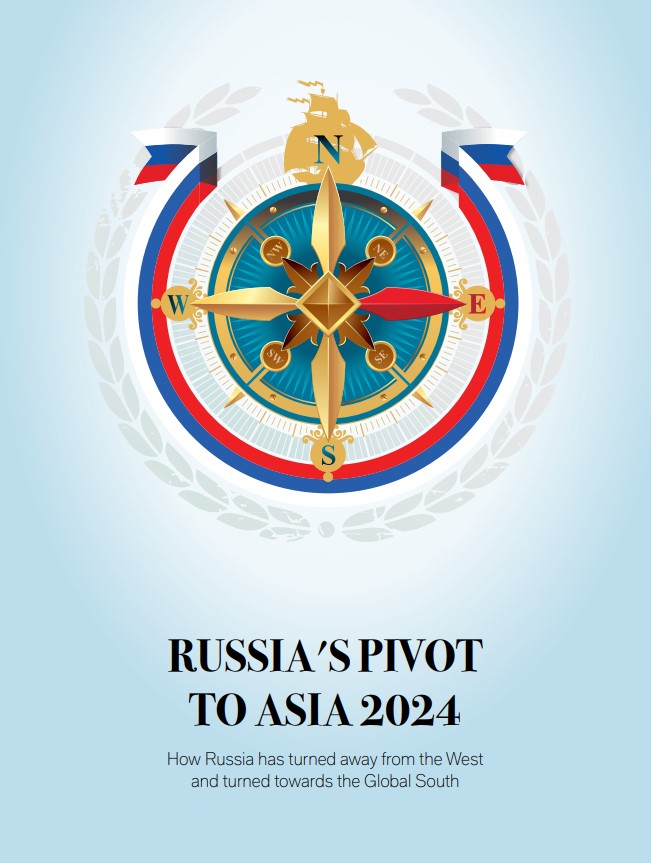
Our 2024 Russia’s Pivot to Asia PDF guide is a 250 page, full colour and comprehensive study of Russia’s trade and investment development with all countries in Asia and the Global South, including the Middle East, Africa and Latin America. It is a complimentary download and may be accessed in English here and Russian here.

